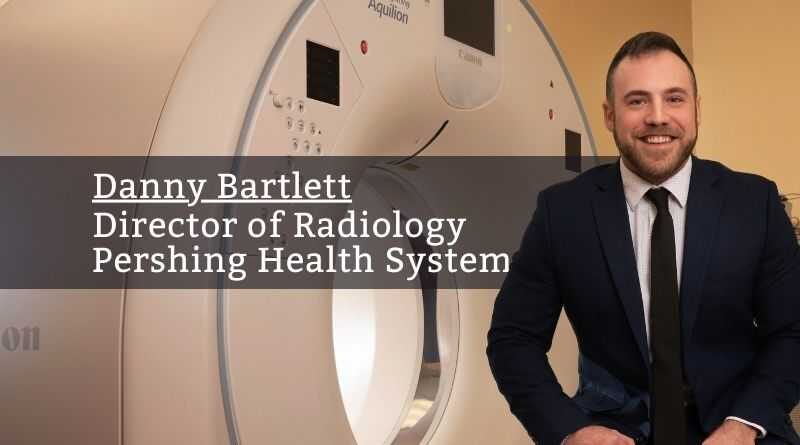It’s Time to Get Rid of the BMI Standard
By utilizing affordable body composition analysis through bone densitometry, we can create more accurate markers to assess general health and mortality risk.
By Danny Bartlett, Director of Radiology, Pershing Health System
Healthcare providers worldwide have relied on body mass index (BMI) to help predict general health outcomes in patients. We have all heard that BMI is an old way to calculate body mass and the results that come with the number associated. BMI is calculated by using two variables, height and weight. These two variables don’t truly quantify a patient’s health and mortality risk. Since 2013, two-thirds of Americans have been overweight, defined by the BMI calculation.
Many universities and hospitals around the world, like Yeugnam University Medical Center Division of Nephrology and Harvard’s Department of Nutrition, saw the issue of relying on BMI. These two institutions finally found a different correlation by using lean body mass and fat mass to determine the mortality risk in patients. Both institutions used body composition analysis through bone densitometry to make a more accurate correlation.
These research studies showed that patients with low lean muscle, high-fat mass, and high visceral adipose tissue have a higher risk of diabetes, kidney failure, and may have fattier livers. BMI doesn’t differentiate between bone mass, lean muscle mass, body fat, and visceral adipose tissue. Body composition analysis provides these parameters with additional measurements as well.
What other measurements does body composition analysis have?
There are many ways to acquire a patient’s body composition. These methods span from electrical impedance analysis, which utilizes a weak electric current that flows through your body, to hydrostatic weighing, which only measures body fat percentage. Bone Densitometry can look at more in-depth measurements and ratios that these other alternatives don’t have. One of the most important measurements is the visceral adipose tissue (VAT) measurement. Visceral adipose tissue is fat that surrounds organs within your abdominal cavity. A high VAT number correlates with a higher risk of heart disease, Alzheimer’s, type 2 diabetes, stroke, and high cholesterol. The android/gynoid ratio is another integral measurement that bone densitometry can provide is the android/gynoid ratio. Android fat is distributed through the body’s trunk, while the gynoid is fat that accumulates around the hips and buttocks region. People with higher android fat have a higher chance of heart disease and diabetes. By calculating how much fat you have through your trunk (android) and dividing it by the fat distribution around the hips and buttocks, we can create the android/gynoid ratio. If this ratio is more significant than one, it can present more health risks for patients.
Is Body Composition Analysis through Bone Densitometry safe for patients?
Yes, even though body composition analysis utilizes radiation, patients’ radiation is very low. Therefore, a round-trip flight across the United States can give you more background radiation.
Depending on state regulations, state radiation control programs may also be involved to ensure that programs meet low radiation standards by incorporating specific time frames between each exam.
What other features does this scanner have?
Bone densitometry’s primary function in a hospital is to help screen for osteoporosis in patients who may suspect a decrease in bone mineralization. Most hospital programs that promote women’s health utilize bone densitometry and mammography as their yearly screening tools. Another feature that bone densitometry may have is a single energy femur exam, which can help diagnose atypical fractures, and vertebral fracture assessment, which can help detect fractures or deformities in the thoracic and lumbar spine. These other features will give patients a more well-rounded experience with different ways to diagnose various diseases.
When it comes time for your next bone density scanner or incorporating your first, adding the additional software for body composition will be worth it because of the quick return on investment.
Can my facility afford this revolutionary piece of equipment?
Universities have had this technology for numerous years to study changes in the human body. Health and wellness centers have also utilized this equipment to help monitor fat loss and muscle gains.
We are now seeing the beginning phases of smaller hospitals incorporating body composition analysis through bone densitometry because of the utilization of the osteoporosis screening feature. Small hospitals attempt to make a one-stop experience for women’s health by incorporating mammography and bone densitometry. In addition, smaller hospitals are upgrading their bone density scanners with additional software to analyze body composition.
When it comes time for your next bone density scanner or incorporating your first, adding the additional software for body composition will be worth it because of the quick return on investment.
How will patients get referrals for this exam?
Most of your patients will self-refer depending on state regulations. Patients that come in are typically health-conscious or starting a new health journey. Body composition analysis is a great spot to start when modifying a healthy lifestyle. Tracking progression and regression on fat loss and muscle gaining can help decide what path to go. Dieticians and personal trainers love a starting point that can quantify results.
Patients have seen the scale stay in the same spot and become discouraged when they’re making positive results. The reasoning is that patients may gain muscle and lose fat proportionally, which willoffset fat-loss results. With body composition analysis, we can see where the muscle is growing and decreasing fat.



